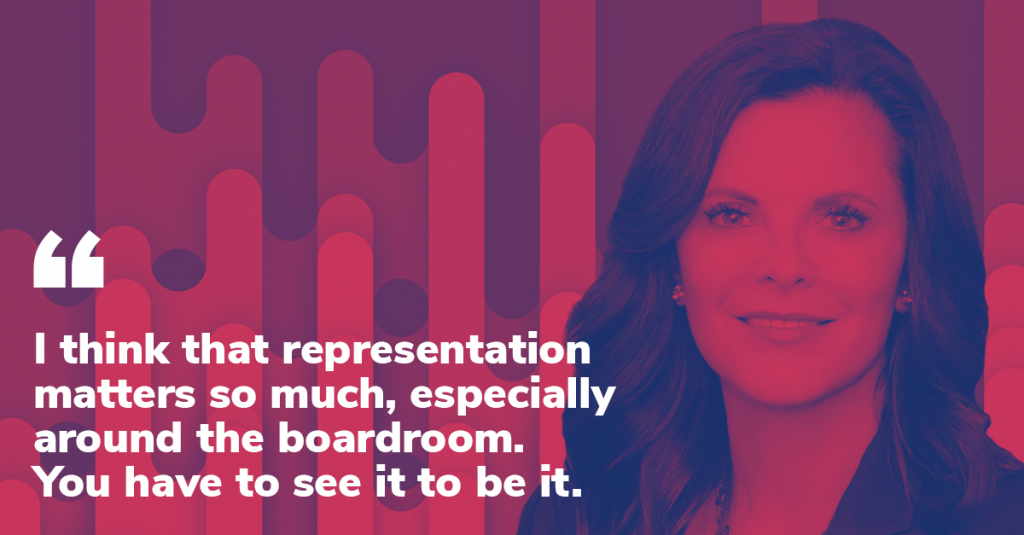4 Diversity & Inclusion Tips From the Leader of a Lending Giant with a 60% Female Workforce

Diversity and inclusion have become hot-button buzzwords across corporate America. Many financial services companies have established new D&I training programs in an effort to address proven imbalances.
But if diversity and inclusion stop at a mandatory HR training meeting, a company can quite literally expect to fall behind.
On a recent Clear to Close podcast episode, Patty Arvielo, President and Co-founder of New American Funding, spoke about the benefits of actively pursuing diversity within the mortgage industry. With decades of lending experience, Arvielo is well-known as one of the premiere leaders in the industry. She’s also considered a trailblazer for diversity and inclusion within the lending sector. Of the 4,900 total employees at NAF, 60% are female professionals and 46% are people of color.
As a Latina who worked her way up from a $6-per-hour clerk position, Arvielo has unique insight into what it takes for a company to thrive at every level, and she maintains that the key success factor is diversity.
Recent data concurs that diversity isn’t just a nice thing to think about, it’s actually crucial to maintaining market share. A study conducted by McKinsey reveals that companies with gender diverse leadership are 21% more likely to lead the industry in profitability, and those that are ethnically diverse are 33% more likely to achieve maximum profits.
Arvielo says the reason is simple: “Representation matters.”
But in an industry largely dominated by white males, how can mortgage companies actively pursue the diversity that today’s consumer climate requires to succeed? Arvielo shares four actionable ways to normalize diversity and inclusion company-wide.
1. Cultivate understanding and empathy.
To move beyond a one-dimensional, checklist-formatted version of diversity, Arvielo says she makes it a point to create conversations beyond numbers and HR data.
“I’m really comfortable talking about who feels differently than me in the workforce,” she says.
“I don’t try to change how they feel. I try to walk in their shoes and understand how it is that they want to be treated in the workplace.”
Often, information about preferences and expectations can’t be quantified or analyzed. It can’t be generalized across people groups. It can only be learned through actively listening. Over time, Arvielo has learned to accept and celebrate the nuances that make her workplace experience different from others. What she desires in a workplace is different even than other females.
Developing understanding in the workplace might make some people uncomfortable. That kind of intentionality requires vulnerability. It takes a step past the golden “do unto others” rule; workplace empathy goes beyond treating others the way you want to be treated and asks others how they want to be treated.
2. Encourage an atmosphere of authentic expression.
Frequently, underrepresented employees find it difficult to speak up for themselves, because by doing so they feel the weight of representing not only themselves but also their identifying people group.
Arvielo thinks that speaking up for oneself is a skill that can feel unfamiliar based on learned behaviors. Her own childhood memories include times when she was asked by a host if she wanted a Coke, only to have her mother quickly answer that no, she did not. From a young age, she was taught to defer, to step back, to not want—and that’s a mindset she’s had to actively overcome in the workplace.
Rewriting the internal script doesn’t come easily for individuals from marginalized communities, and therefore they can benefit from the support of corporate leaders. At NAF, Arvielo works to encourage all employees to be their own advocate, and she tries to lead by example. Knowing that the next generation’s eyes are on her, she makes a point of speaking up for herself and for others.
But at 55 years old, Arvielo would say self-advocacy is a skill she’s still learning. She recounts a recent scenario when she threw her name in the hat for a top position at a non-profit that’s close to her heart. She knew her voice was needed—the children served were 98% Hispanic and the workers were 90% women. Yet she deferred to a white, male counterpart.
“I was so mad at myself,” Arvielo says, noting how easy it is for underrepresented individuals to step back instead of stepping forward, even after years of practice. She goes on to say, “It’s tough to speak up. That’s what we need to be talking about.” Corporate leaders need to acknowledge this difficulty and work to create an atmosphere where the next generation can be increasingly comfortable asserting their value and ideas.
3. Work toward representation at every level.
Arvielo often gets asked how she’s managed to create such a diverse company in an industry that’s statistically saturated with white males.
She answers, “Reflection and mirroring matter. You have to see it to be it.” Young Latinas see Arvielo leading the company, and they see an opportunity for their future. “Latinas at NAF see themselves owning a big mortgage company.”
Representation in top leadership positions lets underrepresented people know that they will be safe and understood within the company. It sends a message that there is no ceiling, and that diversity is seen as an asset, not something to be checked off by hiring diverse individuals for entry-level positions only.
Arvielo knows that this kind of multi-level diversity takes time. In the 1950’s there were 18 million women in the workforce; today there are more than 64 million working women. That means women haven’t really been participating in the workforce as a major presence for that long. “We’re still playing catch-up,” Arvielo says, adding that it’s her generation that will pave the way for the next. “It’s an exciting time.”
When it comes to leadership diversity, a trickle-up effect will not happen overnight, and it won’t happen on its own. To be proactive about including diverse voices at every level, companies need to examine the methods of selection for new hires.
Auditing job descriptions is the first step. Research shows that certain words appeal to particular demographics. Many of the job descriptions within an established company were written by males with males in mind, and the wording reflects that. Rewording job descriptions to include more collaborative language may help draw a wider pool of candidates.
Diverse selection panels are also necessary. It’s no secret that females and males relate differently to one another. That’s how we end up with boys’ clubs and girls’ cliques. But the workplace shouldn’t be a place of clubs and cliques. If an interview panel is made up of people who look the same, they’re probably going to continue to choose people who look like them simply because of a natural ability to relate.
Therefore, representation on selection panels can make all the difference.
Arvielo says, “The difficult question around this is: How are we chosen? Are we choosing ourselves or are we waiting to be chosen?”
Of course, diverse hiring is only half of the issue. Regularly valuing the contribution of diverse individuals is key. “It’s easy to hire diverse,” Arvielo says, “but are you including them in the decision-making future of the company?” Actually being included is different than just being there.
4. Take initiative to offer education.
Concrete issues arise, however, when companies acknowledge the need for diversity yet are pulling from a pool of candidates that simply is not diverse. The tech industry is dominated by white or Indian males; Latinas represent only 7% of the industry. So when tech entrepreneurs start a new company, boards continue to look the same, because those with prior experience tend to fall into dominant demographic categories.
This is why Arvielo advocates for education within the financial services industry. “Education is key,” she says. “If you stop learning, you’re dead.”
Every successful company needs a feeder, a conduit that can deliver qualified people. At New American Funding, that feeder is NAF University, a center for mortgage education that’s designed to equip people for a role in the company.
Arvielo sees NAF University as one of their company’s most valuable resources for inclusion and diversity because it opens people’s eyes to the many possibilities within the mortgage industry. Without knowledge of the opportunities, diverse candidates may choose a career path that’s more familiar or more transparent. NAF University recruits from without in order to promote from within.
By way of example, Arvielo points to the woman currently running NAF’s tech division. This woman was originally accepted as a backup receptionist. Over time, she discovered new areas of interest within the company and rose to one of their most trusted leaders. Without knowledge of those opportunities, she may have taken her talents elsewhere.
Because diversity and inclusion matter.
Some corporate leaders may adopt an attitude of “if it ain’t broken, don’t fix it” when it comes to diversity and inclusion. But unless leaders acknowledge that there is brokenness, their companies stand to suffer negative fallout in the future.
Hispanics are currently driving first time home buying. New federal initiatives will hopefully raise Black homeownership rates as well. In order to reach these new homebuyers, companies need to provide a mortgage environment that understands and suits their unique needs. Having a workforce that represents those target markets allows companies to stay relevant and serve customers better.
Mortgages are human, and humans are diverse. At Maxwell, we realize the power of diverse human relationships, and we center those relationships in the way we build mortgage software. To learn more about how Maxwell can support diversity and inclusion at your company, listen to our full interview with Patty Arvielo and connect with one of our relationship managers at any time.


